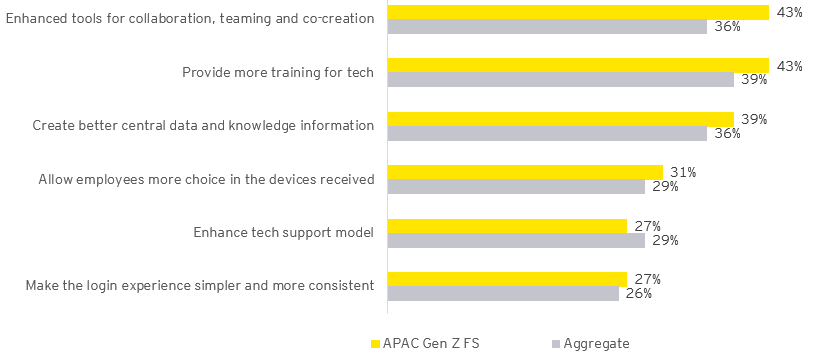Gen Z is the most diverse generation to date, characterized by high levels of activism for social justice, ethical, racial and cultural, and gender issues. As such, this generation feels that homogeneity in their workplace only serves to stifle innovation and creativity. This is also the “we, not me” generation with individuals favoring inclusive organizations and preferring not to work for, or engage with, financial institutions (FIs) that don’t respect diversity or reflect their own or others’ unique identities.
Unfortunately, most organizations are still on a lengthy journey to build and cultivate a culture of DE&I within their workplaces. For instance, global gender parity in economic participation and opportunity only narrowed by a minuscule 0.3 percentage points year-on-year in 2023. More concerningly, this has not only stagnated in APAC for over a decade, but registered a 1.6 percentage point decline this year.
Among others, course correction calls for more inclusive hiring practices, continual upskilling, and the provision of career opportunities for women — particularly in the fast-growing, higher remunerating disciplines in science, technology, engineering, and mathematics (STEM). Committing to gender diversity means that APAC banks need to be doing more to support women’s equal opportunities to pursue and thrive in financial services (FS) careers that could enhance their economic security.
To help leaders understand the status of belonging in one of the world’s most diverse regions that is APAC, EY teams conducted a regional Belonging Barometer research. Here, only 43% of regional employees feel like they belong in their workplace, with 25% considering switching organizations within the next 12 months.
Unsurprisingly, levels of exclusion experienced by key employee sub-groups registered at much higher levels. Racial and ethnic minorities, those from the LGBTQIA+ community, people with disabilities (PwD), and neurodivergent workers (who exhibit different mental orientations) feel that their authentic selves are least welcomed at work, and thus are less able to contribute in a meaningful manner.
As these individuals comprise a sizable percentage of the world’s population, ensuring that they are included is not only socially appropriate, but critical to access their largely untapped talent pool. For instance, globally 16% of us have a disability, so embedding disabilities inclusion across banks has a strong business-building value. Supporting this observation is an EY collaborative report exploring APAC perspective on disability inclusion indicating that 68% of employers reported productivity benefits (e.g., from reducing hidden costs of low morale and high rates of absenteeism and staff turnover) from having provided workplace inclusivity for PwD.
Organizations that prioritize people in their workforce decisions see markedly better outcomes. Thus, in this time of change and heightened discourse among Gen Z about social equity, banks must dismantle age-old banking sector stereotypes to advance DE&I and foster employees’ sense of workplace belonging.
Major benefits of integrating a diverse workforce include the fostering of out-of-the-box thinking and varied approaches to problem solving that could enhance creativity, spur innovation, and potentially engender a more competitive edge for the banks.
DE&I priorities are crucial also because these typically ensure more engaged and committed employees, and enhance team morale and retention, with 63% of APAC employees from very diverse workplaces experiencing a strong sense of belonging against 36% from less diverse organizations. Echoing this is the EY/IIF global risk management survey wherein 35% of bank chief risk officers (CROs) outline the implementation of effective DE&I strategies as being critical to building positive ways of working and retaining personnel within their organization.
To create more meaningful talent advantage, APAC banks should:
- Determine what DE&I means to the organization. Instead of attempting to tackle a myriad of issues and not getting significant traction on most, prioritize specific differences* (e.g., gender, ethnicity, PWD) as starting points. This shortlist would vary across APAC depending on factors such as local cultural norms, political climate, and legislative requirements.
- Embed diversity metrics into talent hiring and promotion processes, continually monitor trends and conduct social listening to ensure inclusivity.
- Source talent from nontraditional pools such as diversity platforms, community colleges and other industries beyond the FS sector to build more representative teams.
- Design a program of systemic interventions such as educating non-minority staff and influencing behaviors to address exclusion, and reduce inherent or intentional biases.
- Ensure leaders prioritize diversity dimensions and seek to create conditions for belonging by being open, authentic, and empathetic toward others.







